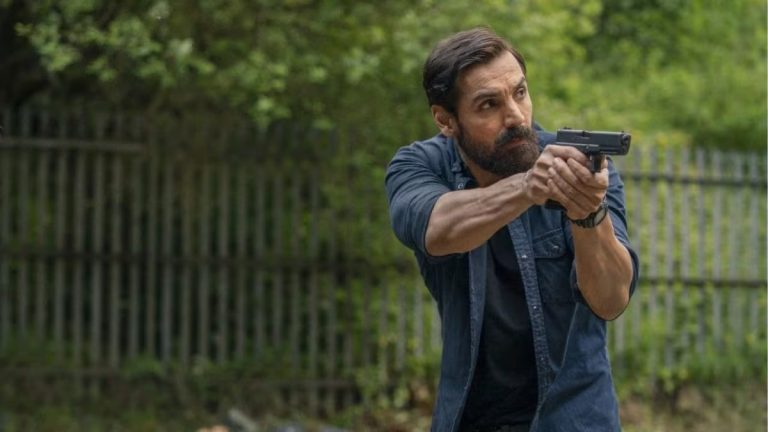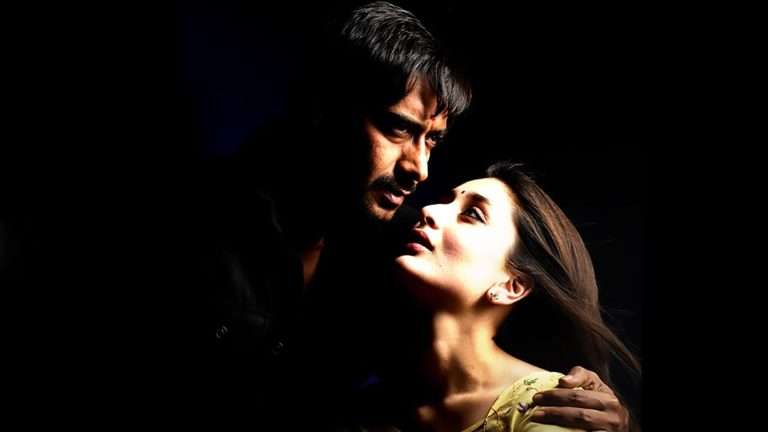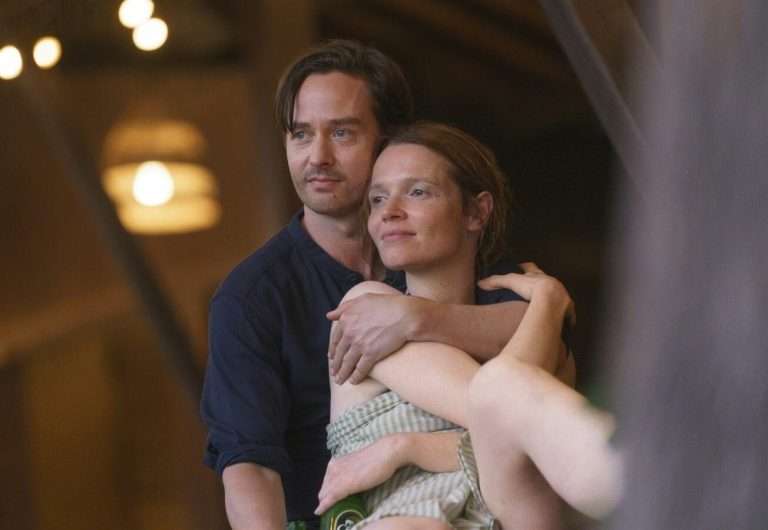Bhaimon Da” (2025), a biopic of the celebrated Assamese filmmaker Munin Barua—affectionately known as Bhaimon Da by those close to him—is a complex film to make, given the absence of primary sources that define the subject. In such a case, the most effective way to tell the story is to exclusively focus on their body of work. And that’s what Team “Bhaimon Da” (2025) has done. Although the opening few minutes of the film explore Munin Barua’s early life in Golaghat (a small town in Assam) and his relationships with his family members, it soon shifts focus to his creative journey as a writer, actor, musician, and eventually, a director.
Starting from his young adult days as an avid viewer of Hindi films through his amateur theatre days, and later his emergence as the maker of hit Assamese films like “Hiya Diya Niya” (2000), “Daag” (2001), “Nayak” (2001), “Kanyadaan” (2002), “Bidhata” (2003), and “Barood” (2003), the film explores the most prominent works of Munin Barua’s filmography—from “Bowari” (1982) to “Raamdhenu” (2011). In this exploration, we get to know about the good and bad, or the ups and downs of the filmmaking scenario in Assam, as his journey symbolises both the epitome of Assamese cinema and also its fall.
The film directed by Sasanka Samir is written solely on the basis of second-hand accounts narrated by people who knew Munin Barua personally – an imprint of which got carried over to the film. Firstly, while the film acquaints us with Barua’s body of work, it stops short of offering us a peek into his inner world.
Yes, we do hear him speak about his commitment to the Assamese language, share his reflections on a new government born out of a student movement, and witness the subtle expressions of his humanity—like when he quietly refuses free vegetables from a vendor, but the fact being referred to is a dimension that remains quietly shadowed beneath these honest and kind acts. Unfortunately, this is not possible even if the makers wanted to.
Secondly, the conflicts in the story are largely external—at times it’s Shiva Prasad Thakur’s struggle to secure funding for his film “Phaguni” (1978), at other times it’s the death of Monjyoti Baruah. Sometimes the antagonist takes the form of non-Assamese cinema hall owners, while at other moments, it’s simply fate itself. There’s also a fair amount of time dedicated to Jayanta Hazarika’s Xur Bahini and later Zubeen Garg’s eccentric style and amusing antics.
Even later, the collective conflict of Assamese cinema becomes his personal conflict in the story. Towards the end, the film also foregrounds Rijjoo, Munin Barua’s son, reducing Barua to the background. Thus, the film seems to be about everyone else but Bhaimon Da. Yet, there is meaning in this too, for Bhaimon Da was a figure who belonged to everyone.
Functioning as a love letter to Assamese cinema, “Bhaimon Da” (2025) truly has something for everyone. For elders, the films of Pranjal Saikia, Bidya Rao, Biju Phukan, and Mridula Baruah will trigger the nostalgic factor, while for the millennials, it will be Zubeen Garg, Jatin Bora, and Ravi Sharma. And perhaps this is the closest we will ever come to in terms of getting a Zubeen Garg biopic, well, unless someone decides to make it one day. Let’s just hope we have enough primary material to build that story on when the time comes.
As a nostalgic treat for anyone who loves and relates to Assamese cinema and its history, “Bhaimon Da” (2025) is also filled with multiple references that only true cinephiles will recognize. Such as the film that Zubeen Garg keeps referring to that he is making, or a love story that blossoms at the set of “Bowari” (1982), or Pabitra Kumar Deka and Roopkar. But above all, the film is packed with the portrayals of many well-known figures – how well they resemble in appearance or match in performance is a different story altogether.
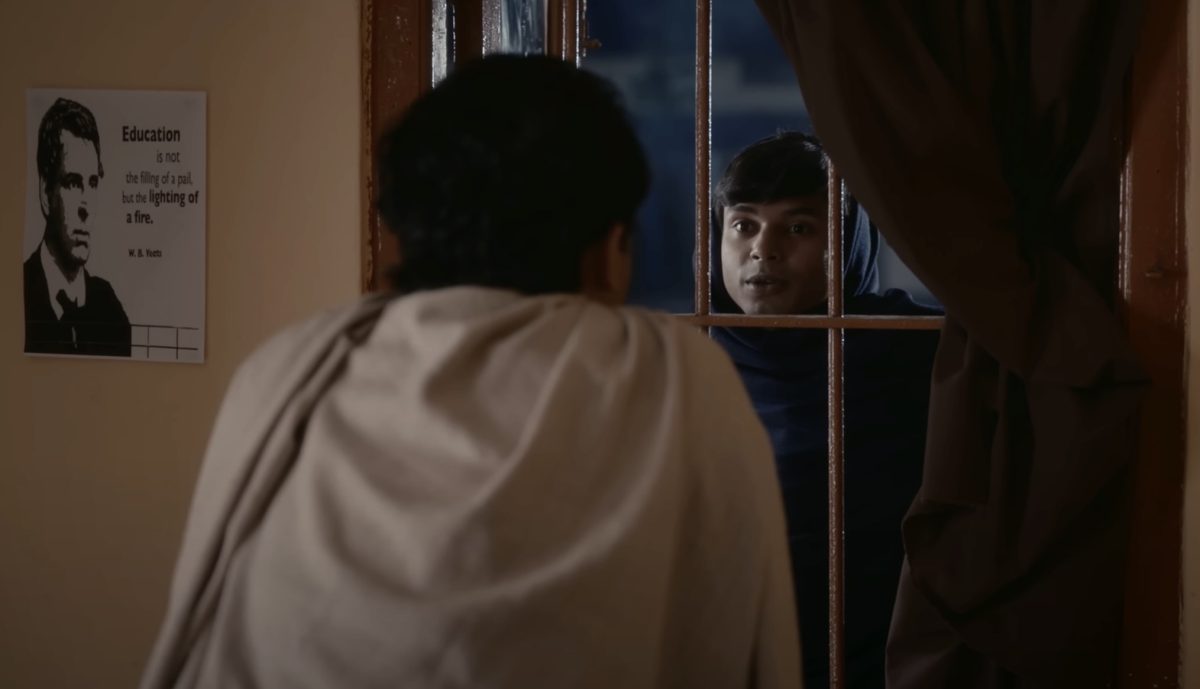
An inevitable end of having actors embrace multiple real-life personas in the film is that some of them tend to play on the borderline of realism and caricature. Himangshu Barman as Himanta Biswa Sarma notably shares that fate. Budget limitations can definitely be a concern even in the most elaborate of all productions, especially in a film production scenario like Assam. But had there been a bit more to spend, we might have seen even better aesthetics? Had there been a little bit more, we would have seen better makeup and a closer physical resemblance between the actors and the real-life figures they portrayed.
Now, Zubeen Garg sounds like Garg—thanks to Rahul Gautam Sharma’s voice—but actor Partha Pratim Hazarika bears little facial resemblance to the heartthrob. Nilim Dutta matches veteran actor Biju Phukan’s looks and physicality and Kaushik Bharadwaj too carries Jatin Bora’s style but wish he was a bit bulky. So, this kind of near-misses and close-enough(s) exist across all the notable personalities of Assam represented in the film.
While the film deserves a shoutout for its production design, some imperfections still exist in the art and costume design of the film – especially the choice to sometimes dress the two leads like an extravagant Bollywood period production by Rohit Shetty. Besides, the superimposed text to help audience make sense of the timeline of the film – be it 1958 or 1966 or 1978– spares no time for it to be read. It just passes away faster than a blink.
As fast-paced as “Bhaimon Da” (2025) is, the editing often feels helplessly obedient to the call of the clock. The inherent episodic nature of biopics becomes particularly evident here—time must bend, compress, and take narrative jumps. And in this rush, emotions are occasional. Unless it is a song depicting romance or bromance, such affecting moments are sparse, like the quiet dignity of aristocracy in Gunakar Dev Goswami’s portrayal of Bhaimon Da’s father, and the unspoken bond he shares with his son.
There’s a silent approval yet a strong command, a fragmentary reminder of which somehow passes through the eyes of Bhaimon da years later, as he faces his own son, Rijjoo. That father-son angle alone could have made for a beautiful film in its own right. Kudos to Gitartha Sharma for nailing the part of Rijjoo.
Bondip Sarma shines more in his portrayal of the titular character of Bhaimon Da. The silent and gleeful exchanges with Manjula Barua in their prime, and later his firm and sturdy stand while dictating his convictions with his eyes — these are quiet but powerful moments. Yet “Bhaimon Da” (2025) is not as much about Munin Barua, the man, as it is about his work—his theatrical releases, particularly.
The plays he staged with Shiva Prasad Thakur, the scripts he wrote, and eventually the films he directed—these form the soul and centre of the film. The rest just pass by as mentions. In one scene, for instance, Bhaimon Da references the TV serial Papu Niku Sangbad. In another, he is shown writing scripts for direct-to-video release films (popularly known as VCD films in Assam). The boundary of priority for the makers is very clear here. On the other hand, Yasashree Bhuyan as Manjula Barua is promising, but sadly, we don’t see her much post-interval.
The wisdom of hindsight is clearly at work in “Bhaimon Da” (2025). The film positions his character as the man who resurrected Assamese cinema. It is true, but that status was something he had earned only later. Back then, he was simply making hit films, without the weight or responsibility of being a saviour of the industry. Yet the film views his journey through this retrospective lens. The narrative core is shaped by the benefit—and bias—of this hindsight.
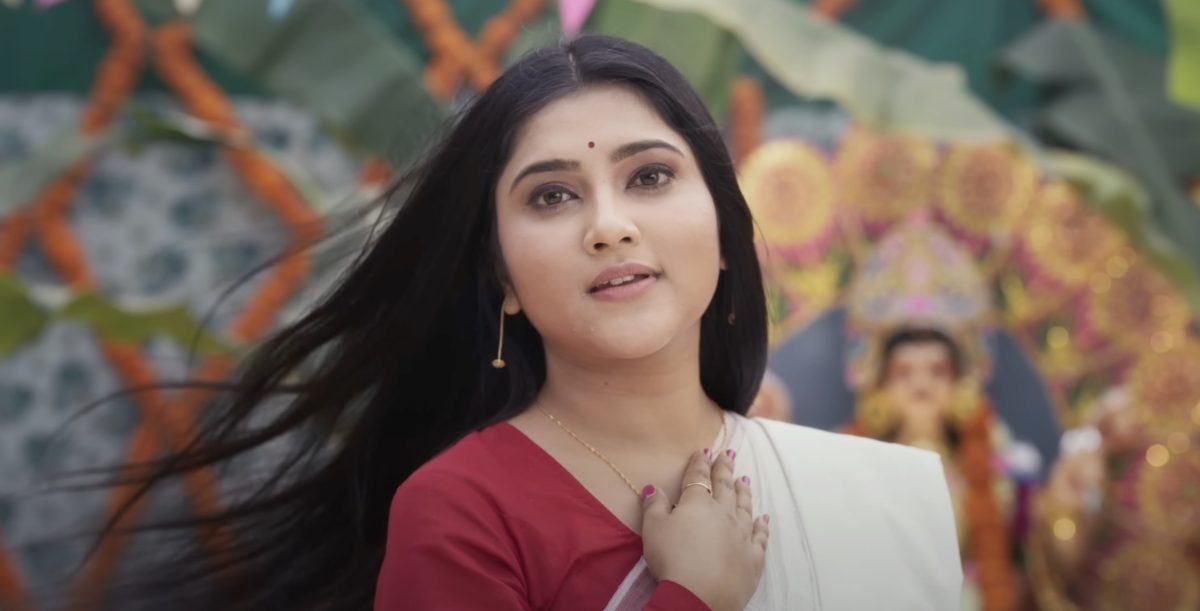
When producers say, “If Bhaimon Da does a film, it will definitely work wonders,” it doesn’t so much reflect their confidence as it does the hindsight-informed certainty that shapes the narrative. As a result, towards the latter half, “Bhaimon Da” (2025), as a film, becomes more about the Assamese cinema industry and its problems, but contextualised from the perspective of Munin Barua’s films.
There’s talk of the ULFA ban on Hindi cinema, the inactive role of the government, and piracy, and even a glowing tribute to Jyotiprasad Agarwala features in the end. This isn’t inherently wrong. Any reference to Assamese cinema of that period would be incomplete without these challenges. And yet, in the midst of such adversity, Munin Barua managed to deliver the commercially successful “Raamdhenu” in 2011. In fact, “Bhaimon Da” (2025) serves as a more fitting ode to the man than his final film, “Priyaar Priyo” (2017). And it’s for a good reason that “Priyaar Priyo” was completely left out of the discussions in the film.
Bhaimon Da represents Assamese cinema, no doubt, but the makers also realized that Assamese cinema is not entirely defined by Munin Barua alone. So, the masters of the time had to fit in. Bhabendra Nath Saikia is shown handing over the script of “Dinabandhu” (2004) to Munin Barua, and Jahnu Barua, too, is worked into the narrative in a blink and miss appearance.
Beyond that, the film features Sanjeev Hazarika, Bani Das, Bidyut Chakravarty, and several other familiar names from the film space of Assam. However, their presence feels largely ornamental. They don’t have much to contribute other than fill up the negative spaces (a celebrated filmmaker should be in touch with his contemporaries, isn’t?) and offer moral support to Munin Barua from time to time.
“Bhaimon Da” (2025), by virtue of its subject, is also a rare film, as not many films are made about filmmakers. An irony of sorts – the ones who tell stories about others, yet their own stories are rarely told on screen. It is also an epiphany of everything wrong with the Assamese film industry, and the fact that the man who once resurrected Assamese cinema had to posthumously reappear to bring back the crowd once again highlights the bittersweet symbolic role of regional cinema and the audiences of the State. It’s both a tribute and a critique when Bhaimon Da quietly laments the lack of public support for “Dinabandhu” (2004). That, in itself, speaks volumes about our audiences.
Also, noticeably absent from the film was any significant nod to Udeshna Cinema Hall. While we do see some poorly designed animated depictions of Apsara and Vandana cinema hall of Guwahati, the absence of Udeshna—a major hub for Assamese cinema in its heyday— leaves a slight void in this otherwise colourful canvas. And yes, the enjoyment value of “Bhaimon Da” (2025) is indeed directly proportional to how deeply one relates to the journey of Assamese cinema.
Yet, even for those less familiar, the film can offer a valuable window into the challenges of making cinema in the region. Speaking of challenges, now all eyes are set on the upcoming biopic of Jyotiprasad Agarwala, the father of Assamese cinema, directed by National Award-winning filmmaker Manju Bora.
Released on May 23, Bhaimon Da (2025) is currently running in theatres of Assam, New Delhi, Hyderabad, Mumbai, Pune, Chennai, Noida, and Bangalore.

![Before We Vanish [2018]: An Alien Invasion Film Exploring the Reason for Human Existence](https://79468c92.delivery.rocketcdn.me/wp-content/uploads/2018/01/Before_We_Vanish_HOF-768x432.jpeg)

